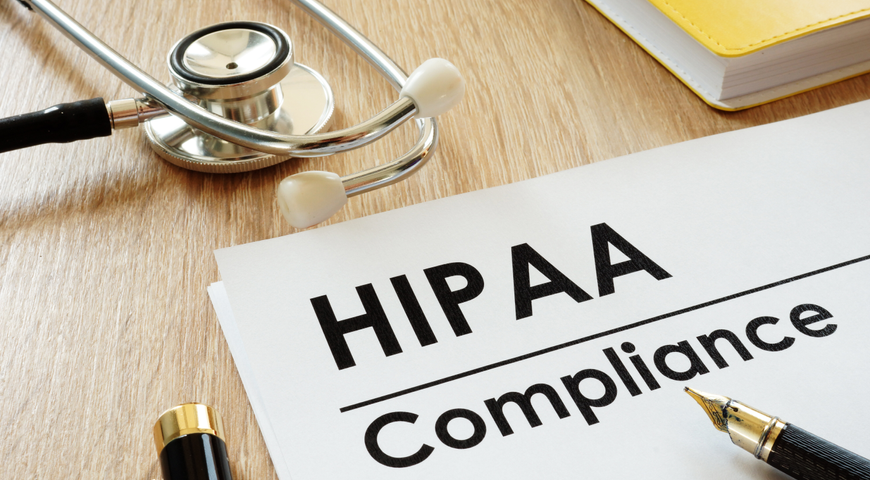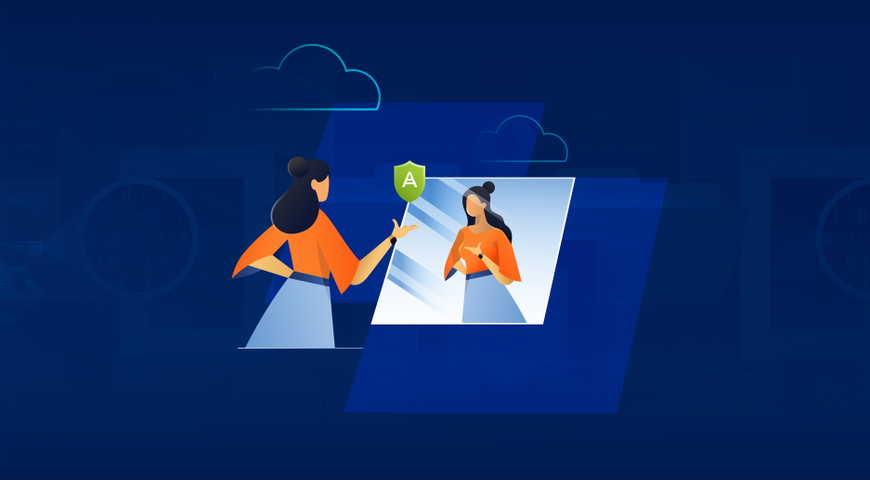
Cloud adoption in the health care sector has historically been accompanied by concerns over compliance with the Health Insurance Portability and Accountability Act (HIPAA) and General Data Protection Regulation (GDPR). Health care is one of the most regulated industries due to the sensitive nature and sheer volumes of data these organizations handle on a daily basis. With compliance fines costing up to $50,000 USD per violation, health care organizations can’t afford to risk the safety of precious data. There are a lot of misconceptions about cloud tools that cause health care leaders to resist adopting cloud computing, and this is especially true for cloud-based disaster recovery (DR).
However, health care organizations could be missing out on game-changing benefits, powerful business continuity and institutional outcomes that cloud-based DR offers. In this article, we cut through the noise to help health care communities learn the true value of cloud-based DR. The article covers the common challenges in health care data protection, disambiguates cloud adoption and identifies six key benefits of cloud-based DR.
Bridging technology, health data and compliance: Divulging health care challenges
When it comes to health care data, the challenge is not only protecting electronic health records (EHR) and patient information, but also payment information, proprietary data and personal identifiable information (PII) of employees and patients. To set the stage, we explore the most prevalent challenges in health care cybersecurity and data protection.
Older operating systems, machines and devices
The typical health care organization experiences ongoing digital transformation and relies on some outdated technology to carry out patient care. This legacy technology includes older operating systems, hardware and machines that make it difficult to keep running if problems arise. There’s also the challenge of integrating older systems with modern systems, including wrestling with digitizing records that were once hard copies. The legacy technology that health care providers continue to use, including machines, operating systems, applications and devices, are difficult to patch and pose cybersecurity risks, such as malware attacks via open vulnerabilities.
Remote, special purpose internet of things (IoT) devices are another threat to business continuity. IoT devices include insulin pumps, glucose monitors, pacemakers, blood pressure monitors, drug administrating tools and other remote monitoring devices. These single-purpose devices are influential in telemedicine, connecting patients to clinicians through the internet to exchange clinical data. However, these devices expose health care entities to compromise, ransomware and data breaches. They are known to pose vulnerabilities to health care organizations because their proprietary operating systems aren’t patchable.
Growing health data
The average life expectancy of the population continues to rise, and the volume of health data grows in tandem. According to the National Center for Biotechnology Information (NCBI), nearly 80% of health data is unstructured. This unstructured data comprises patient scans, MRI reports, clinical notes, discharge summaries and other medical documents. The health care industry generates, aggregates and manages large volumes of data daily and organizations are responsible for ensuring its security. The wealth of data exchanged throughout health care facilities makes them a prime target for cyberattacks.
Strict compliance regulations
Patients entrust health care organizations to protect masses of sensitive information. This makes health care a heavily regulated industry. There are numerous laws in place to safeguard patient information, and violating them can result in hefty fines. For this reason, some health care leaders are wary of adopting cloud solutions. With cloud-based backup and disaster recovery, the most prolific concern is that duplicate copies of health data would be backed up in an off-site location. This is useful in case systems fail and the health care center can switch over to the unaffected, duplicate version of data swiftly — pivotal in life-saving emergencies.
The greatest misconception about cloud backup and disaster recovery is that all the challenges of protecting data on-site are duplicated in the cloud. Moreover, most cloud environments are governed by a third-party cloud provider, but the health care organization is solely responsible for protecting the data. If data out in the cloud is compromised, stolen or breached, the health care organization falls subject to compliance fines. Health care leaders walk away with the notion that cloud DR doubles an organization’s compliance exposure.
6 benefits of cloud disaster recovery for the health care industry
Cloud disaster recovery is a transformative business continuity tactic that health care organizations can take advantage of. We disambiguate the stigma surrounding cloud-based disaster recovery and regulatory compliance to help health care and IT professionals uncover the benefits to improve operations, efficiency and security. We introduce encryption as an integral method used to leverage cloud-based DR while adhering to HIPAA compliance.
1. Improve efficiency of shared resources and fluidity with organizational demand
We employ virtual machines to utilize shared resources in the most efficient way possible. Virtual machines parcel out resources to ensure computing resources are allotted as needed among working individuals. We can think of cloud services in the same way but as an amplified version. Cloud DR gives health care organizations the elasticity to meet resource demands by providing a standby pool of resources that health care organizations swap over to in the unfortunate event that primary resources fail.
2. Scale with high volumes of data
Health care providers look to cloud-based backup and DR because of its ability to recover large quantities of medical technology data and non-medical information with ease. Additionally, health care entities can back up high volumes of information as the organization collects more health and non-health data. The cloud reliably protects growing health data and lends flexibility to healthcare organizations who pay for resources as needed.
3. Lower costs
Health care facilities don’t need to run their own data center. Cloud DR eliminates the upfront costs needed to set up, manage and protect on-site servers and hardware. Additionally, health care organizations won’t need to hire skilled IT talent to manage those servers and hardware. Where cloud computing excels in cost-efficiency is its ability to use shared resources with high efficiency. The cost-effective benefits of cloud DR have contributed to its widespread adoption and success across verticals.
4. Simplify data management
The adoption of cloud-based disaster recovery helps health care organizations consolidate, organize and centralize data repositories, where health care IT professionals can streamline data management on a unified platform. Traditional disaster recovery encompasses several on-site servers that IT professionals manage individually. The cloud service provider plays a role in managing data infrastructures for health care organizations and provides peace of mind knowing they can depend on enterprise-grade data centers to withstand possible infrastructure failures.
5. Enhance business continuity and disaster recovery (BCDR) for health care
Whether hit with ransomware, natural disasters or human-related factors, health care institutions rely on cloud disaster recovery that provides secure data infrastructure allowing health care professionals to access critical information in day-to-day activities and emergency situations. Much like a spare tire, cloud DR gives health care facilities the safety net to failover to unaffected, backed up data in case the primary data becomes inaccessible in unforeseen events. Cloud DR is a powerful tool that bolsters system uptime and most importantly secures business continuity to health care operations.
6. Secure data and eliminate compliance violations
Cloud-based disaster recovery that leverages encryption eliminates the traditional risks and compliance violations that plague unencrypted backups. Encryption makes it possible for health care organizations to adhere to HIPAA and GDPR compliance while gaining benefits that cloud DR offers, including scalability, reliability and cost-efficiency advantages to boost operations and drive quality patient care. Unlike on-site disaster recovery, the data remains unaffected by natural disasters because it’s housed in a separate location.
Why is data encryption key to GDPR and HIPAA business continuity?
Modern cloud-based disaster recovery encrypts all backed up data by scrambling and locking information that renders it unusable to cybercriminals. Encryption is key to upholding the security of data copies in a cyberattack. Even if hackers grasp encrypted data, they won’t be able to complete nefarious objectives. When adversaries get ahold of encrypted data, health care organizations are not in violation of HIPAA compliance and avoid financial penalties. The key takeaway is that data encryption is the most effective, secure and cost-effective strategy to protect data in cloud disaster recovery.
About Acronis
A Swiss company founded in Singapore in 2003, Acronis has 15 offices worldwide and employees in 50+ countries. Acronis Cyber Protect Cloud is available in 26 languages in 150 countries and is used by over 20,000 service providers to protect over 750,000 businesses.




